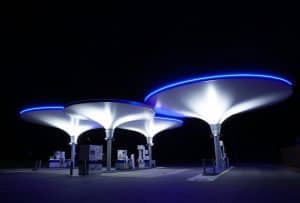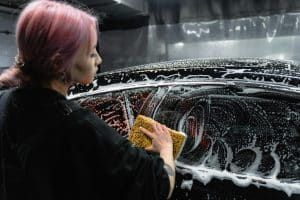Recycled Ocean Plastics Find Use in Car Interiors
In today’s world, recycling has become a crucial topic as we continue to grapple with the negative impacts of plastic pollution on our planet. One major contributor to this issue is ocean plastics, which has not only been causing harm to marine life but also posing a significant threat to our environment. However, in a surprising turn of events, researchers have found a way to put these discarded ocean plastics to good use – in the automotive industry. Yes, you read that right. Recycled ocean plastics are now finding a purpose in car interiors, creating a circular economy while reducing the footprint of single-use plastics. Let’s dive deeper into this innovative solution and see how it’s helping to address our plastic problem while also introducing new sustainable practices in the automotive sector.
The Problem of Ocean Plastics
The amount of plastic waste in our oceans has reached an alarming level. According to the National Oceanic and Atmospheric Administration, an estimated 8 million metric tons of plastic enter our oceans every year. This is equivalent to one garbage truck of plastic being dumped into the ocean every minute. These plastic wastes not only harm marine animals, who often mistake them for food, but also release harmful chemicals into the water, affecting the entire marine ecosystem.
One type of ocean plastic that has gained significant attention is microplastics – small pieces of plastic that have broken down from larger plastics. These microplastics end up in the digestive systems of marine animals, causing internal injuries, and sometimes death. Moreover, they also make their way up the food chain, potentially harming humans who consume seafood.
The Solution: Recycling Ocean Plastics for Car Interiors
While cleaning up ocean plastics is an essential step, finding a sustainable solution to the growing plastic waste problem is equally crucial. That’s where the idea of recycling ocean plastics comes into play, with car manufacturers becoming one of the early adopters of this innovative solution. Some of the leading players in the automotive industry, including Ford, BMW, and Volvo, are now incorporating recycled ocean plastics in their car interiors.
The process of using recycled ocean plastics for car interiors involves collecting plastic waste from beaches and oceans, which is then sorted, cleaned, and melted down to create pellets. These pellets are then used to produce car interior components such as seat covers, floor mats, and so on. This not only gives a new purpose to the discarded ocean plastics but also reduces the reliance on virgin plastics, decreasing the overall plastic production.
The Advantages of Using Recycled Ocean Plastics
Environmental Benefits
The primary advantage of using recycled ocean plastics in car interiors is the significant reduction in environmental impact. By diverting plastic waste from our oceans and landfills, this process helps to limit the amount of plastic polluting our planet. It also reduces the need to extract and manufacture more virgin plastics, further lowering greenhouse gas emissions and conserving natural resources.
Economic Benefits
The use of recycled ocean plastics also presents economic advantages. By creating a circular economy, it not only helps to reduce the need for costly waste management but also generates new market opportunities. This practice also promotes sustainable practices in the automotive industry, which can ultimately lead to a positive change in consumer behavior. Additionally, using recycled plastics can reduce the production costs for car manufacturers, making the process more cost-effective in the long run.
The Road Ahead
While the use of recycled ocean plastics in car interiors is still in its early stages, it has already shown promising results. Car manufacturers are now exploring new ways to incorporate recycled plastics into other components, such as engine parts and body panels. This shows the potential for this innovative solution to create a significant positive impact on our environment, and hopefully, inspire other industries to follow suit.
In conclusion, recycling ocean plastics for car interiors is a win-win situation, benefiting both the environment and the economy. As individuals, we can also contribute by choosing products that use recycled plastics and reducing our overall plastic consumption. Together, we can drive this movement towards a more sustainable future for generations to come.











